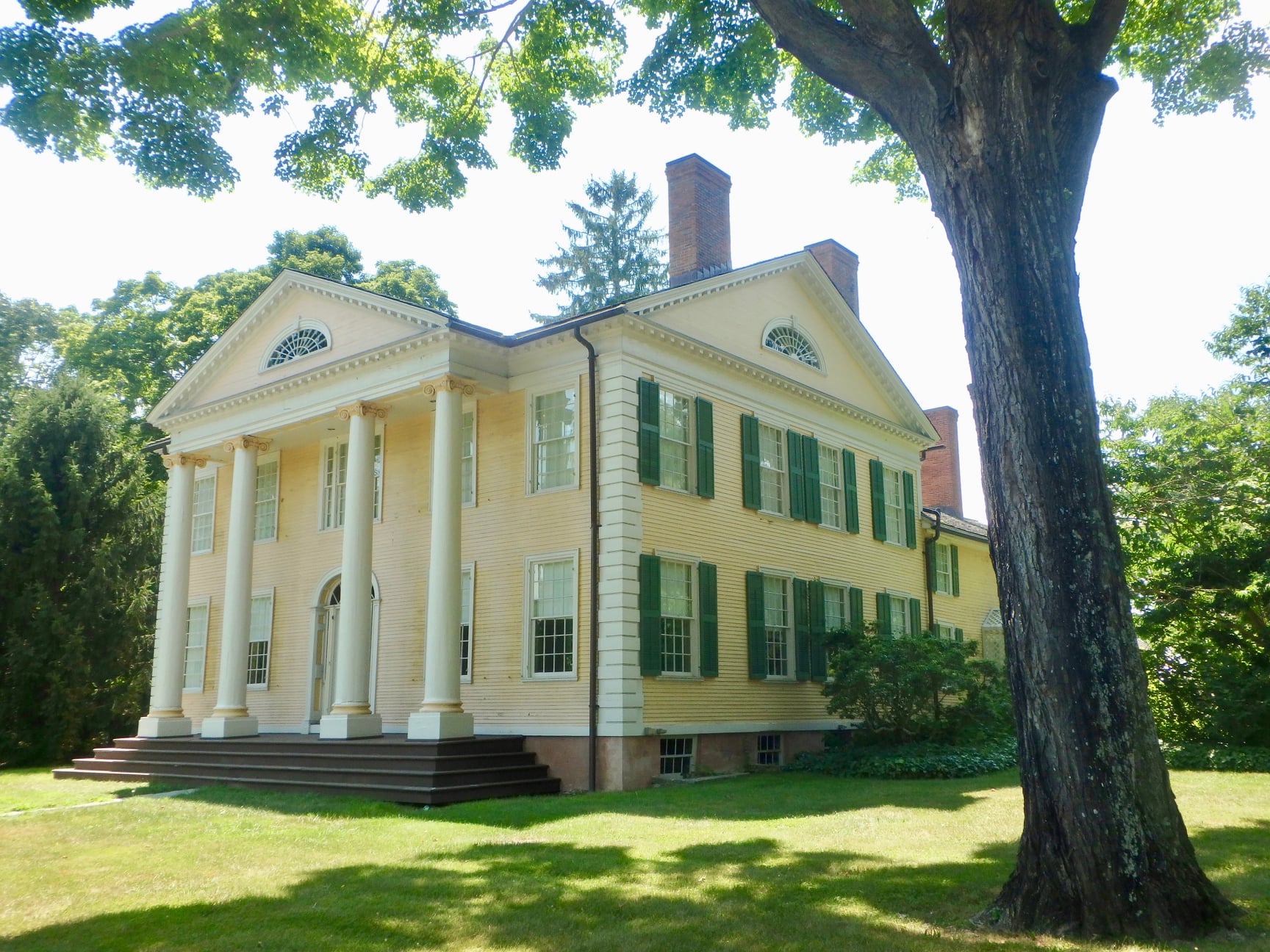JULY 31, 2020 – While chaos filled yesterday’s headlines, my wife, our daughter-in-law, and I found refuge inside paradise within Eden—Old Lyme, Connecticut. (Our son was back at the cove, working remotely as if on-site in Midtown Manhattan, pre-Covid.)
Our excursion was arranged by Mylène, our son’s lovely wife, a dual citizen of France and Portugal, who’s plunged into the lore and history of her newfound land. She knows more of the surroundings than do I, whose family roots here predate the ancestral arrival of many locals. A professional photographer, Mylène has a fine eye for fine art.
So it was that we visited the Florence Griswold Museum near the mouth of the Lieutenant River in Old Lyme.
Florence was one of four children of Robert Griswold, whose English ancestors had arrived here in 1620. He was captain of a transatlantic packet boat owned by a brother, but after many harrowing crossings, he retired early—when Florence was only five. He invested heavily in an ox-and-horseshoe factory, which failed, and despite the help of friends, he died a broken man, leaving his family, house rich but cash poor.
Yet his surviving children (his only son died at 16) received top-flight educations imbued with artistic and musical refinement.
Robert’s widow and daughters—by then in their 20s—converted their imposing residence into a girls school, operated successfully for 14 years. But then bad fortune took the lives of Florence’s mother and one sister, while mental illness consigned another sister to life-long confinement.
Alone and pressed to make ends meet, Florence placed ads in a local newspaper, attempting to sell flowers from her garden. She accepted boarders at her grand home, adorned with fine things from her father’s travels. In 1899 New York artist Henry Ward Ranger discovered Old Lyme and the Griswold house. He returned with a bevy of artist friends. Three years later, the American impressionist, Childe Hassam, arrived, followed by other artists. Under cultivation by a woman blessed with high intelligence, steeped in liberal education, and graced by a loving, nurturing, and accommodating personality, her home and grounds became the center of the largest impressionist art colony in America.
The surroundings were a natural canvas and palette. As one artist described this area, “It’s just waiting to be painted.”
Florence died in 1937 at the age of 86 and in relative poverty—she’d often sacrificed remuneration in order to support her artist friends.
We owe thanks to many in this community for providing generously in Florence’s memory. A robust endowment and continued giving secure the legacy of the artists she drew to her circle.
In the gallery next to the house-museum, we admired works by those artists. On a plaque featuring “Favorite Colony Sites,” each depicted by an exemplar painting, I saw “Hamburg Cove.” The captured scene was Eden, as we see it from the verandah of Lyme Light.
Now, whenever I think of my grandfather, whose first name happened to be “Griswold,” I’ll think of Florence and her grand contribution to the legacy of American art.
(Remember to subscribe to this blog and receive notifications of new posts by email.)
© 2020 by Eric Nilsson

1 Comment
The ‘Gris’ should feature this paean in their next newsletter!
Comments are closed.